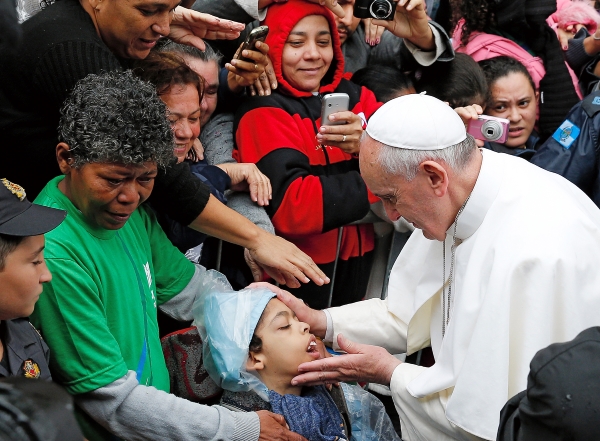by Msgr Gerard Burns
Amoris Laetitia is a document written against the background of the difficulties and challenges around the world for marriage and families. This is not to say that marriage and family life is solely a picture of gloom — Pope Francis would not have had “Joy” in the title if that was the case — but these challenges have brought many wounded marriages, wounded families and wounded individuals.
Theologian Dr Rocio Figueroa, in her recent presentation (NZ Catholic, December 24) on Amoris Laetitia (AL), reminds us that AL was issued precisely during the Year of Mercy. It sought to look again at the place we all have our first experiences of God and of love — the family. It sought also to bring balm to where there is deep hurt. Some of the deepest wounds come when marriages fail.
The small reference in AL to Communion for the divorced and remarried is really about how to walk with people who experience tragedy. It is a pastoral theology synthesising doctrine and pastoral care for real people in particular situations. It invites pastors and people to greater spiritual maturity in the process of discernment.
Marriage breakdown is something happening all around the world, but Pope Francis’ Latin American experience gives a particular starting point for AL. Understanding that perspective can help us in accompanying and supporting marriages and families here in Aotearoa as well.
I worked for some years in the poorer areas of Latin America, in Peru especially. These areas constitute at least 50 per cent of the total population of the continent. There were huge difficulties for poor people in regard to marriage. The cost of getting married was usually relatively high both for the civil requirements and for a Church wedding. Many men in the local machista culture did not see marital fidelity as something possible or necessary.
Many women would only cohabit and not marry because they considered that if they married their man he then felt he completely “owned” his wife. It was a world of scant well-paid work. Effectively it was often the woman’s income that provided continuous if meagre income for families. For men getting work could mean long absences from their families. Despite these situations and in a world of precarious work and income if the woman at least had a male partner that might be some help for shelter, food and clothing.
This context brought enormous challenges to the idea and practice of sacramental marriage. It contributed to the fact that at many Masses I celebrated around Peru I could have a church packed with baptised Catholics and only a small minority receiving Communion. It looked like Communion was only for an elite few.
Pope Francis knows these situations well as he frequently visited the “villas miserias” (suburbs of misery) of Buenos Aires. In those places wonderful examples of warmth and solidarity could be present alongside poverty, danger, fragile housing and infrequent work. The Pope has spoken from the beginning of his pontificate about the Church being present to people who are impoverished and on the margins of Church and society. AL is first written for people in those situations. That is why the Pope uses the image of the Church as a “field hospital”, caring for the wounded and dying amidst, or close by, the battlefield of life.
If we take the preferential option for the poor as being first for the materially poor then how is AL applied in those situations? It would be first about being present to the wounded and marginalised in a listening and practical way. It includes the spiritual accompaniment of the poor (Evangelii Gaudium: 198, 200).
Some might say the New Zealand situation is completely different. I say there are many differences, but in the question of marriage and family we are in a battlefield. There are many challenges to solid marriages and family life: economic and work conditions, social media, faith and personal formation, the pace of life, addictions, etc.
We are in a context where more than a third of marriages fail, the role of faith and Church has lessened, the understanding of what marriage is has changed as has the understanding of gender roles, there is greater cultural diversity in our societies. Not all of this is bad and people still look for love and commitment even if how to achieve it long-term is less certain.
The message of AL builds on that of Evangelii Gaudium and the task of the missionary disciple – to go to where the wounded are (even if we too carry our own wounds), to be alongside them. Together we seek healing and offer it to one another (mercy). Together we listen for God’s Word in that situation (discernment). This is a pastoral approach based on a deep mission theology of the Good Shepherd, not waiting for the “lost” to return, but going out and seeking that which was lost. Not a Church for the elite and the perfect, but a field hospital where lives are put back together again.
Msgr Gerard Burns is vicar general of Wellington archdiocese.

Reader Interactions